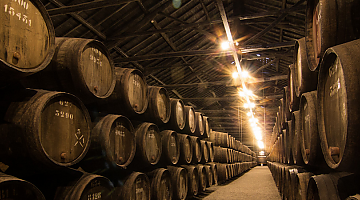Competitors Douro and Alentejo Regions win the Most 2014 Commendations from ViniPortugal

Published on
What's the best way to spread the word about a quality product? Advertising, campaigning, and sponsoring attention-grabbing competition are three valuable ways to reach that goal. The private non-profit association ViniPortugal, founded in 1997, works towards promoting Portugal's reputation as a premier producer in the international market.
Over a hundred promotional activities regarding Portuguese wine are sponsored by ViniPortugal annually. The competitions are challenging, build strong teams and work ethics, and bring recognition from peers and the public. Approximately 350 national wine producers participated in the 2014 Wines of Portugal competition, with the Douro and Alentejo regions walking away as the biggest award winners.
Similar to the American daycation, Lisbon tourists and locals enjoy the daytime jaunt from Lisbon to the wine country of Douro Valley, holder of 67 medals from the above competition.
Steep, rugged mountain slopes, cut sharply by the River Douro, have crumbled slate-like metamorphic rock soils. The grapevines hold fast and get the necessary nutrients to create the sweet red port for which Douro is famous, as well as an equally pleasing white wine. The Douro region has 3 sub-regions:
- The majority of the vineyards are located in the cool, rainy climate of Baixo Corgo.
- Long lasting wines come from the drier, hotter climate of Cima Corgo, the heartland of fine port wines.
- Douro Superior, hot in summer and cold in winter, is the biggest sub-region with a lot of empty land that has yet to be planted.
Rich, fruity red wines from the Alentejo region grace the cellars of restaurants and cafes throughout Portugal. The skills of experienced, dedicated vintners result in the production of flavorful white wine Divided into 8 sub-regions, the area covers nearly a third of the nation's land and took home 59 medals from the 2014 Wines of Portugal competition.
Alentejo is a daycation destination just over the hills from the Algarve. Gentle hills and plains form the bulk of the topography. Colorful soils are built of pink marble, limestone, granite, and schist. Portalegre, located on the granite foothills of the Sao Mamede Mountains, has cooler temperatures and more rainfall than the other sub-regions, which in turn produces a quality wine grape. Borba was the first sub-division in this region to earn international recognition for the quality of its smooth red wines.
The celebrated white grape for the region is Antao Vaz, while the most widely-planted red grape is Aragonez. The importation of Cabarnet Sauvignon vines is adding yet another selection of a respected wine.
Twenty-five of the one hundred specialists judging the competition were international judges. One comment regarding the 1,070 competing wines from Portugal's winemaking regions is that nearly eighty percent of them were worthy of medals. In fact, the quality was so high that only gold and silver medals were awarded. Bronze was excluded to allow more silver. In all, 280 wines received an award.
Portugal cherishes tourists and encourages small groups to take advantage of tours to various wineries. Visitors will see thick vines of the old vineyards with a mixture of grapes to harvest as well as the modern vineyards that hold separate types of grapes. This important business is an established part of the nation's history and economy. Portugal generated €725 million from wine exports during 2013.
Published in: Guide to Portugal / News and Updates / Portuguese Life